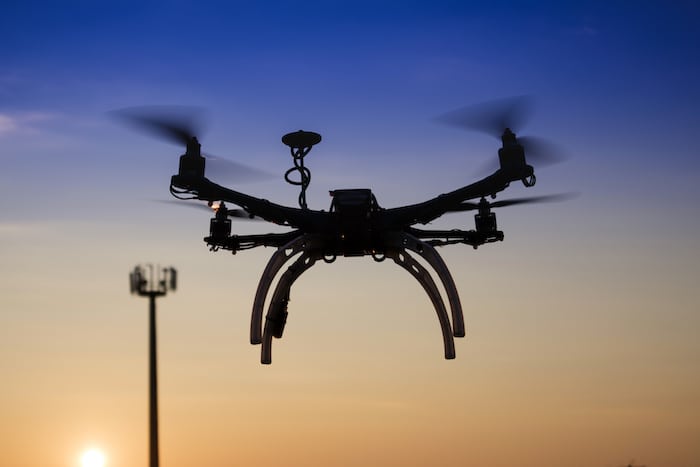As 5G use cases have evolved, new studies and new features are needed for the safe operation of UAVs, 3GPP said.
Unmanned Aerial Systems (UAS) are increasingly integrating into today’s airspace, providing different capabilities such as intelligence, surveillance and reconnaissance data for both civil and military applications.
To address the needs of this quickly maturing sector, there has been a lot of activity in the 3GPP Working Groups to ensure that the 5G system will meet the connectivity needs of Unmanned Aerial Systems – consisting of Unmanned Aerial Vehicles and UAV controllers under the watchful eye. of UAS traffic management.
As 5G use cases have evolved, new studies and new features are needed, for the safe operation of UAVs, but also to ensure that other users of the network do not experience a loss of service due to their proximity to Unmanned Aerial Systems, 3GPP said. .
Here are some of the areas being addressed in the latest 3GPP Releases:
-In 3GPP Release 15 – Enhanced LTE Support for Aerial Vehicles
A study to investigate the ability for aerial vehicles to be served using LTE networks has been published, identifying further performance enhancements for UE-based solutions, network-based solutions, downlink interference mitigation, uplink interference mitigation, mobility performance and aerial UE Identification.
Also, in Release 15, there were enhancements to TS 36.331 (Section 5.5.4 – Measurement report triggering) to address the issue of aerial UE interference to the base station (eNodeB). The enhancements included the addition of two reporting events – H1 (above) and H2 (below) UE height thresholds – to help the eNodeB to see the UAV and to deal with any potential interference. Other measures for signaling and to reduce interference by the UAV were also added.
-Release 16 – Remote Identification of Unmanned Aerial Systems
3GPP SA1 has completed a study into the potential requirements and use cases for remote identification and on the services to be offered based on remote identification of the UAS.
-Release 17 – Study on supporting Unmanned Aerial Systems Connectivity, Identification and Tracking
Looking at the architecture and system aspects of command and control functions, having identified the UAS, this study looks at the extent to which the 3GPP system can enable UAS components to establish the necessary connectivity between each other and UAS Traffic Management (UTM) – for both line of sight connectivity and non-line of sight connectivity, and on the detection and reporting of unauthorized UAVs towards the UTM.
-Release 17 – Study on application layer support for Unmanned Aerial System (UAS)
The App. dedicated group – 3GPP SA6 – is studying the use cases and requirements regarding UAS identification and tracking. 3GPP said that SA6 is looking at the potential impact on the application layer, in particular the application support / enabler functionalities for UTM and the service interactions between UAS and the UTM (eg fly route authorization, location management, group communication support).
The group is considering architectures and solutions already developed for mission critical and V2X services, for re-use in aerial systems, 3GPP added.
-Release 17 – 5G Enhancement for UAVs
To further meet the needs of 5G connectivity of drones – this work will produce new KPIs and communication needs of the UAV with a 3GPP subscription. Specifically, requirements relating to the following will be documented: KPIs based on communication service, KPIs for command and control traffic, On-board radio access node (UxNB), service restriction for UAV, Network exposure for the UAV.
“In addition to the 3GPP Release 15 work on LTE Aerials in RAN, 3GPP SA studied the remote identification of unmanned aerial systems (UAS) in Release 16, and continues to investigate more aspects including connectivity, identification, tracking, application layer support, and security in Release 17, ”Ericsson said in a report.











![Nightdive Shock with the Thing: Remastered for PC and consoles [Trailer]](https://i0.wp.com/bloody-disgusting.com/wp-content/uploads/2024/06/thethingremastered.jpg?resize=830,535&ssl=1)

